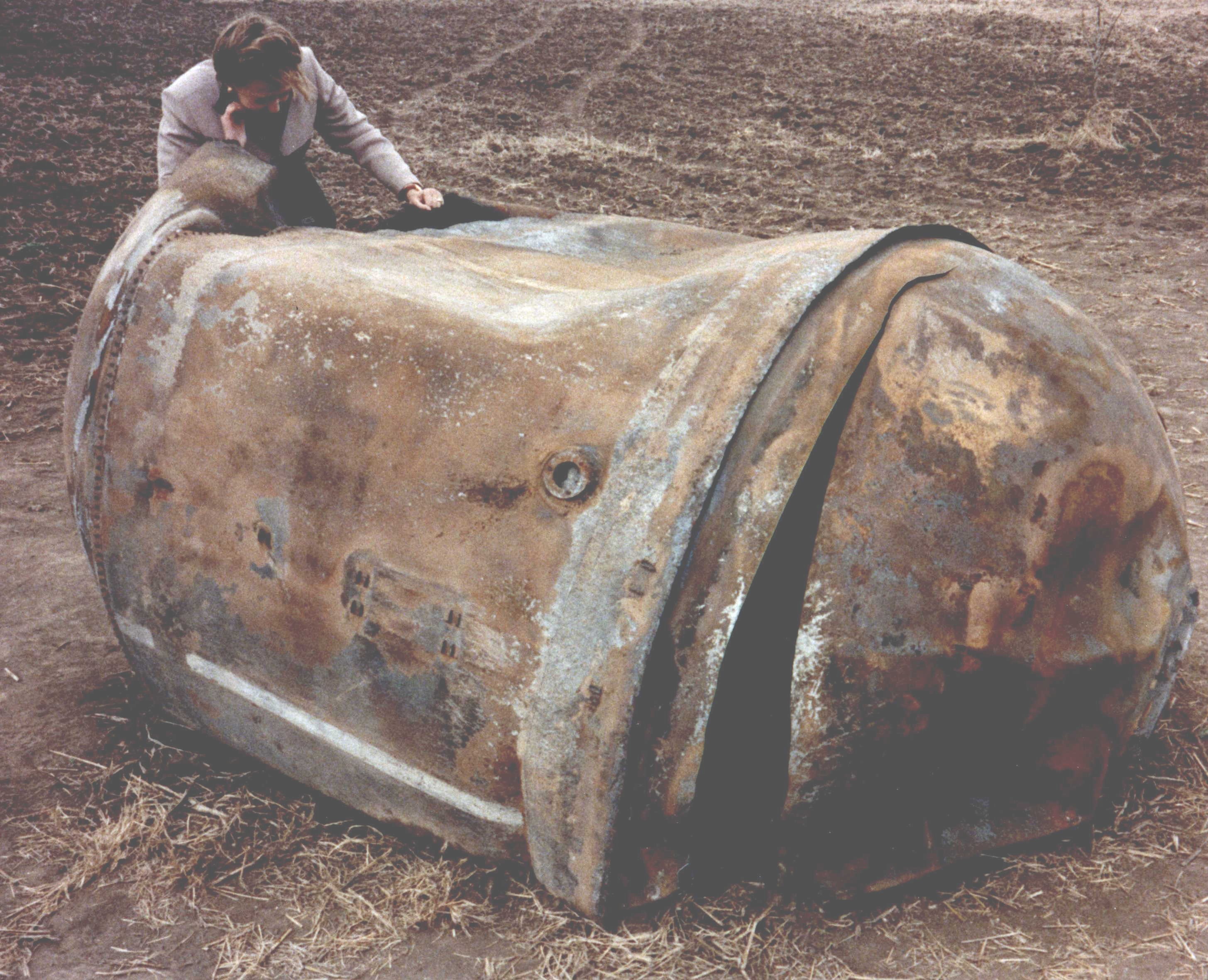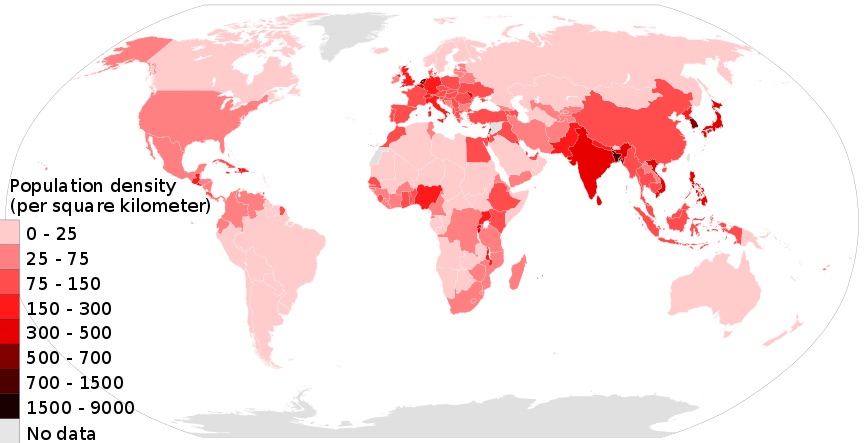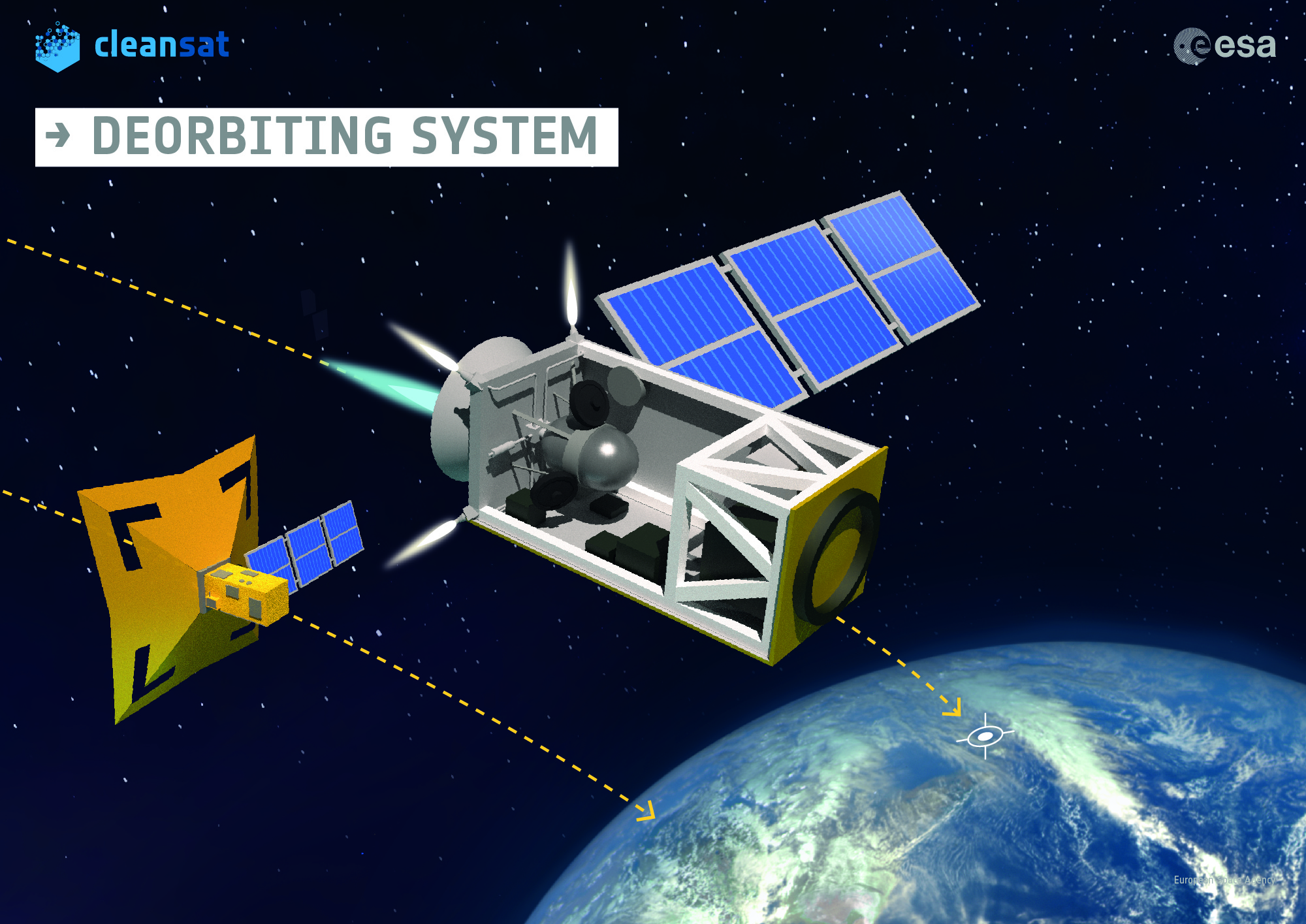One of the main concern and challenge of this century is to reduce the amount of current and future debris in space.
ESA has addressed this problem through ambitious programs such as e.Deorbit and CleanSat which aim to, respectively, send a tug to capture and deorbit a piece of debris, and provide the necessary technologies to enable, simplify and make the compliance of missions with mitigation requirements more efficient .
A way to clean space from debris in Low Earth Orbit (LEO) is to slow them down to reduce their altitude, until they re-enter the Earth’s atmosphere and completely burn… or do they?
Some parts of the satellites or upper-stages (especially tanks which are made of heat resistant materials like titanium) can survive atmospheric re-entry and fall down to Earth. Even though no incident has ever been reported of people injured by surviving space debris, the increasing number of satellites being launched in space calls for an immediate action.

Debris landed in Texas
Copyright: NASA
Making space missions safer is a particularly important matter of concern for the Agency, and that is why it is implementing guidelines to develop controlled and semi-controlled re-entry for space debris.
- Controlled re-entry is the ability to force the entry over a pre-determined area, region, within which the debris is to fall. This is considered as being the best option in terms of safety as one can ensure that the object will fall in specific low-populated regions.
- Semi-controlled re-entry implies less knowledge about the trajectory at end of life of the satellite. Instead of a specific region, one can ensure the fall of the debris within a few orbital revolutions.

Population density countries 2017 world map, people per sq km
Attribution: Ms Sarah Welch [CC BY-SA 4.0 (https://creativecommons.org/licenses/by-sa/4.0)], from Wikimedia Commons
Because of the complex and changing interactions between the atmosphere and the debris, the longer the debris stays in the atmosphere, the more difficult it is for engineers to predict accurately the fallout area on-ground. Indeed, in order to perform controlled re-entry, the debris has to enter the atmosphere with a steep angle making the predictions for the fallout area more accurate.

CleanSat: Deorbiting systems
Credits: ESA
While being the best option, controlled re-entry usually implies tougher constraints for the spacecraft which, consequently, increases complexity and costs of the entire mission. In many cases, semi-controlled re-entry could ensures low casualty risks for populations while minimizing the impact on the main mission of the satellite.
This post was prepared by Sébastien Perrault, Young Graduate Trainee at ESA within the Clean Space team. Sébastien is involved in multiple Clean Space activities such as controlled re-entry, Design for Removal technologies, and Life Cycle Assessment for space missions.





Discussion: no comments